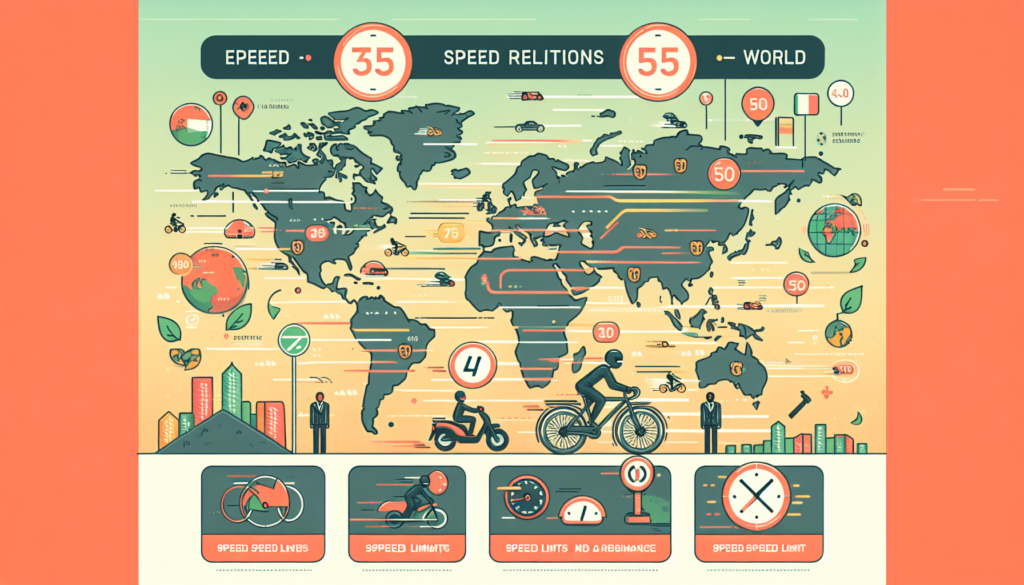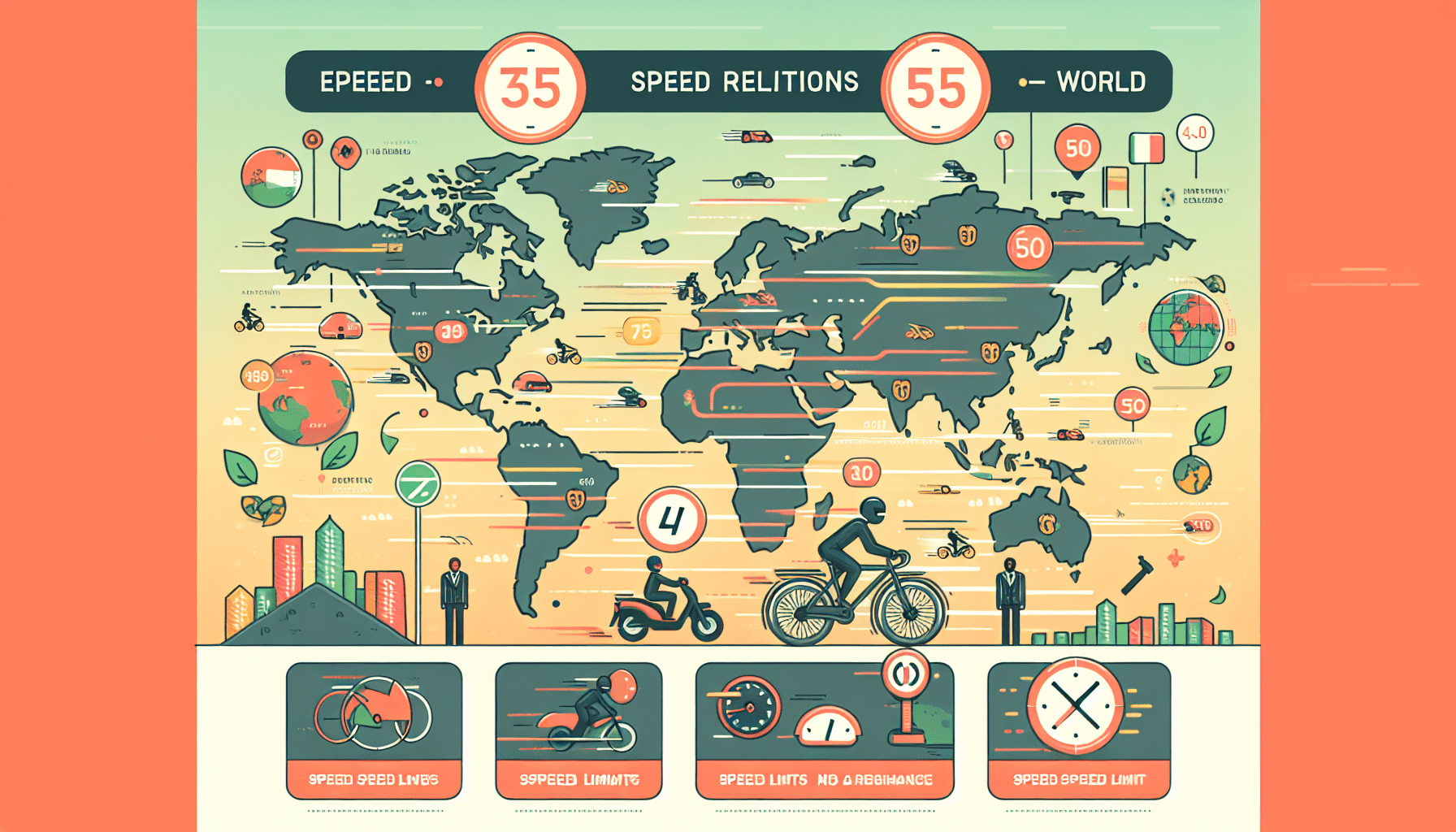Hello there! If you’ve ever wondered about the speed limits of e-bikes, you’re in the right place. In this article, we’ll explore whether e-bikes have a minimum or maximum speed limit and what factors may affect their speed capabilities. Let’s dive in and clear up any confusion you may have about the speed regulations for these eco-friendly modes of transportation.
Do E-bikes Have A Minimum Or Maximum Speed Limit?
Have you ever wondered if e-bikes are limited in terms of speed? Let’s dive into the world of electric bikes to explore whether they have a minimum or maximum speed limit.
Understanding E-bikes
Before we delve into the specifics of speed limits, let’s take a moment to understand what e-bikes are. E-bikes, short for electric bikes, are bicycles that are equipped with electric motors to assist with propulsion. These motors can be activated by pedaling or via a throttle, depending on the model. E-bikes are becoming increasingly popular due to their eco-friendly nature and the ease they provide for riders, especially when tackling hilly terrains or long distances.
Minimum Speed Limit for E-bikes
When it comes to minimum speed limits for e-bikes, there is no universal standard that applies across the board. The minimum speed of an e-bike can vary depending on the model, brand, and regulations in different regions. In general, most e-bikes can reach speeds as low as 10 mph (16 km/h) while some models may have even lower minimum speeds.

Maximum Speed Limit for E-bikes
Similarly, the maximum speed of an e-bike can vary based on various factors. In many countries, e-bikes are limited to a maximum speed of 20 mph (32 km/h) when the motor is engaged. This speed limit is in place to ensure the safety of riders and other road users. However, some e-bikes are designed to reach higher speeds, such as 28 mph (45 km/h) or even 35 mph (56 km/h) in certain models.
Classifying E-bikes Based on Speed
E-bikes are often classified into different categories based on their speed capabilities. These classifications help riders understand the capabilities of their e-bikes and also play a role in determining where they can be ridden legally. Here is a breakdown of the three main classes of e-bikes based on speed:
Class 1 E-bikes
Class 1 e-bikes are equipped with motors that provide assistance only when the rider is pedaling and stop assisting once the bike reaches 20 mph (32 km/h). These e-bikes do not have a throttle and are allowed on bike paths and lanes where traditional bicycles are permitted.
Class 2 E-bikes
Class 2 e-bikes come with a throttle that allows the rider to control the motor without pedaling. These e-bikes are also capped at 20 mph (32 km/h) and are suitable for bike paths and lanes similar to Class 1 e-bikes.
Class 3 E-bikes
Class 3 e-bikes are capable of reaching speeds of up to 28 mph (45 km/h) and are often equipped with a throttle. These e-bikes are considered faster than Class 1 and 2 e-bikes and may be restricted from certain bike paths due to their higher speeds.

Speed Limits and Regulations
It is important for e-bike riders to be aware of the speed limits and regulations in their area to ensure they are riding safely and legally. Some regions may have specific laws governing the use of e-bikes on public roads, bike paths, and trails. Here are a few key points to consider regarding speed limits and regulations for e-bikes:
Helmet Requirements
In many places, wearing a helmet is mandatory when riding an e-bike, especially at higher speeds. It is important to check the local regulations regarding helmet requirements to avoid any fines or penalties.
Age Restrictions
Some regions may have age restrictions for riding e-bikes, particularly those with higher maximum speeds. Riders under a certain age may be limited to riding Class 1 e-bikes or may require supervision when operating faster e-bikes.
Bike Path Usage
Certain bike paths and lanes may have specific rules regarding the use of e-bikes based on their speed capabilities. It is essential to follow these regulations to ensure the safety of all cyclists and pedestrians sharing the path.
Licensing and Registration
In some areas, e-bike riders may be required to have a valid license and register their e-bikes with the local authorities. These regulations are in place to track the usage of e-bikes and ensure they are operated responsibly.
Enhancing E-bike Speed
For riders looking to increase the speed of their e-bikes, there are a few options available to enhance performance. While modifying e-bikes to exceed legal speed limits is illegal and unsafe, there are legitimate ways to boost speed within the confines of the law. Here are some tips for enhancing e-bike speed:
Upgrade to a High-Power Motor
One of the most effective ways to increase e-bike speed is to upgrade to a high-power motor that provides greater assistance when pedaling. This can help riders reach higher speeds more effortlessly while staying within legal limits.
Improve Battery Capacity
Upgrading to a higher-capacity battery can also improve e-bike speed and range. A larger battery can provide more power to the motor, allowing for faster acceleration and sustained speeds.
Reduce Weight
Reducing the overall weight of the e-bike, either by using lighter components or carrying fewer items, can have a positive impact on speed. A lighter bike requires less power to propel, resulting in faster speeds and improved efficiency.
Maintain Proper Tire Pressure
Ensuring that the tires are properly inflated can make a significant difference in e-bike speed. Proper tire pressure reduces rolling resistance, making it easier for the bike to maintain higher speeds with less effort.
Conclusion
In conclusion, e-bikes do have both minimum and maximum speed limits, though these limits can vary depending on the model and regulations in different regions. Understanding the speed capabilities of your e-bike and adhering to local laws and regulations is crucial for safe and enjoyable riding experiences. Whether you prefer cruising at a leisurely pace or speeding through city streets, knowing your e-bike’s speed limits will ensure a smooth and hassle-free ride every time.

